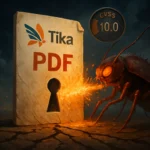Cybersecurity researchers have uncovered a sophisticated new malware strain dubbed SteelFox, which has infected over 11,000 systems worldwide between August and October 2024. This emerging threat demonstrates an alarming trend toward multi-vector attacks, with Brazil accounting for 20% of infections, followed by China and Russia at 8% each. The malware’s hybrid approach, combining cryptomining capabilities with advanced data theft functions, represents a significant evolution in malware complexity.
Distribution Tactics and System Compromise Methods
SteelFox operators employ sophisticated social engineering tactics, distributing the malware through multiple channels including torrent sites, forums, and even legitimate platforms like GitHub. The malware masquerades as activation tools for popular software such as AutoCAD, Foxit PDF Editor, and JetBrains products. To elevate system privileges, the trojan exploits the vulnerable WinRing0.sys driver, leveraging known vulnerabilities CVE-2020-14979 and CVE-2021-41285.
Advanced Technical Infrastructure
The malware’s infrastructure demonstrates considerable technical sophistication, utilizing SSL pinning and TLS 1.3 protocol for secure command-and-control (C2) communications. The cryptomining component employs a modified version of the open-source XMRig miner, specifically configured for Monero mining operations, indicating the attackers’ focus on privacy-oriented cryptocurrencies.
Comprehensive Data Exfiltration Capabilities
SteelFox’s data theft module exhibits extensive capabilities, targeting multiple data categories:
– Browser-based information including credentials, browsing history, and financial data
– Stored Wi-Fi network passwords
– Detailed system configuration data
– Security software presence and configurations
Financial Impact and Monetization Strategy
The dual-revenue model employed by SteelFox operators represents a sophisticated approach to cybercrime monetization. The continuous income stream from cryptomining operations is supplemented by potential profits from trafficking stolen data through underground marketplaces, maximizing the return on investment for threat actors.
Organizations and individuals can protect themselves against SteelFox and similar threats through a multi-layered security approach. This includes implementing robust endpoint protection solutions, maintaining regular software updates, and enforcing strict software procurement policies that prohibit the use of unauthorized activation tools. Additionally, network monitoring for suspicious cryptomining activity and unusual data exfiltration patterns can help detect and prevent SteelFox infections before significant damage occurs.






